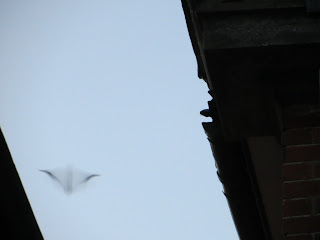Well July is flying by and the heat wave we have been experiencing has managed to combine with the second annual weed cut bringing with it the disturbing spectacle of countryside staff in waders….and not much else.
 |
| Dave J demonstrating the wader dance.... |
A task we have been doing that isn’t quite as cooling on a hot day is charcoal. In a patch of our woodlands here called Queen Meadow Copse, we have a charcoal kiln. Our countryside volunteers do regular burns for us throughout the year, using the hazel we cut from the coppice to fill the kiln, make charcoal and this is then sold at Visitor Reception in the abbey. It is a bargain at £6 a bag and is the perfect example of sustainable woodland management.
Coppicing is a process that takes advantage of the fact that some tree species will, when cut down, regrow from their stumps. The new growth can then be left until the required size (different species are left to grow for varying amount of times as the product required will be different. For example, Sweet chestnut may be used for gate hurdles and fence posts so will be cut down at around 15-20 years of age whilst hazel can be used for smaller things like faggots, charcoal, hurdles and hedge laying poles and so can be cut on a smaller scale of around 7 years). By cutting areas of coppice on a rotational basis it allows for a constant supply of produce to be taken from the woodland whilst always having areas of young and mature growth which makes for a good diversity of fauna to be able to live there.
As coppicing maintains the tree at a juvenile age it means that if it is regularly coppiced, it can never die of old age. Some stools (which is the name given to the coppiced stumps and growth of a tree) are so large in diameter that it is thought they have been coppiced continuously for many hundreds of years.
 |
| Emptying the kiln and sifting the charcoal |
Our ranger Ryan has been learning from the volunteers how to achieve the perfect charcoal burn and one hot sunny morning I helped him empty the kiln after a burn. Within minutes we were both covered in charcoal dust, black from head to foot and sporting heavy eyeliner from the way it collected in our eyelashes, making us look like we were on our way to a heavy metal concert. Having bagged up the charcoal ready for selling, we were so hot and filthy that a quick dip in a quiet spot of the river seemed like our only option – one quick paddle and clean later and we looked presentable again…or so I thought. By the time I got back to the office my face was black again from all the remaining dust on my clothing, something which, as I was walking around the pay zone and talking to people, I wish I’d been made aware of!
 |
| The colour of my bath glove after I washed the charcoal dust off! |
Whilst the presence of a real live hot summer is doing wonders for our wildlife, especially butterflies, it can have adverse effects on the odd creature. This little fellow was found by a volunteer on the floor of our stable yard having fallen out his roost in the roof.
 |
| Having clambered out his box up my t-shirt and onto my shoulder where he got comfortable. |
It was a juvenile Pipistrelle bat and they can get dehydrated in hot weather which weakens them and makes them fall out the roost. I scooped him up in my rugby top and popped him in a box with some water which is what my bat contact told me to do. They also suggested I go back later in the evening and hang it on the wall below the roost to see if it would rejoin the colony or not. Bat mothers are very good and likely to fly down to their young if they hear it squeaking.
So I returned to Mottisfont that evening just before dusk and hung the bat on the wall below where I knew the colony would emerge from. Just after dusk the bats started flying out one by one, whizzing along the rooftops and into the gathering dark. I kept my eyes on my bat and my fingers crossed and, sure enough after 10 minutes or so it flew off and rejoined its clan! A brilliant result as it is quite hard to rehabilitate bats once they get dehydrated but this one was obviously still in good form and strong enough to join its mates again.
 |
| The bats flying out the roof roost at dusk. |


